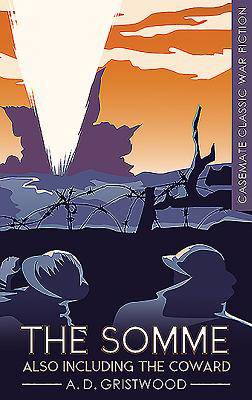
- Afhalen na 1 uur in een winkel met voorraad
- Gratis thuislevering in België vanaf € 30
- Ruim aanbod met 7 miljoen producten
- Afhalen na 1 uur in een winkel met voorraad
- Gratis thuislevering in België vanaf € 30
- Ruim aanbod met 7 miljoen producten
Zoeken
€ 12,95
+ 25 punten
Omschrijving
'The million British dead have left no books behind. What they felt as they died hour by hour in the mud, or were choked horribly with gas, or relinquished their reluctant lives on stretchers, no witness tells. But here is a book that almost tells it......Mr Gristwood has had the relentless simplicity to recall things as they were; he was as nearly dead as he could be without dying, and he has smelt the stench of his own corruption. This is the story of millions of men - of millions.' - H. G. Wells, from the preface In The Somme and its companion The Coward, first published in 1927, the heroics of war and noble self-sacrifice are completely absent; replaced by the gritty realism of life in WWI for the ordinary soldier, and the unflinching portrayal of the horrors of war. Written under the guidance of the master storyteller H. G. Wells, they are classics of the genre. The Somme revolves around a futile attack in 1916 during the Somme campaign. Everitt, the central protagonist is wounded and moved back through a series of dressing stations to the General Hospital at Rouen. Both in and out of the line he behaves selfishly and unheroically, but in a manner with which it is hard for the reader not to identify. Based on A D Gristwood's own wartime experiences, critics have said that few other accounts of the war give such an accurate picture of trench life. The Coward concerns a man who shoots himself in the hand to escape the war, during the March 1918 retreat - an offense punishable by death. He gets away with it, but is haunted by fear of discovery and self-loathing.
Specificaties
Betrokkenen
- Auteur(s):
- Uitgeverij:
Inhoud
- Aantal bladzijden:
- 208
- Taal:
- Engels
- Reeks:
Eigenschappen
- Productcode (EAN):
- 9781612003801
- Verschijningsdatum:
- 15/06/2016
- Uitvoering:
- Paperback
- Formaat:
- Trade paperback (VS)
- Afmetingen:
- 132 mm x 188 mm
- Gewicht:
- 204 g

Alleen bij Standaard Boekhandel
+ 25 punten op je klantenkaart van Standaard Boekhandel
Beoordelingen
We publiceren alleen reviews die voldoen aan de voorwaarden voor reviews. Bekijk onze voorwaarden voor reviews.











